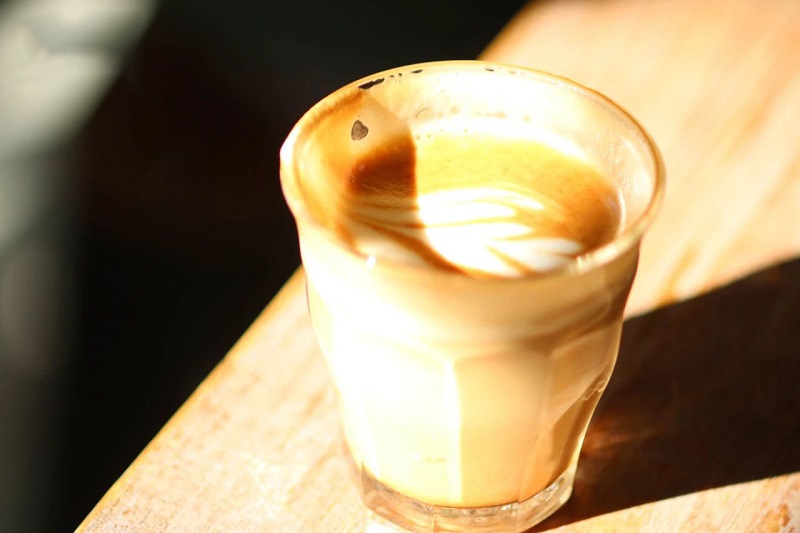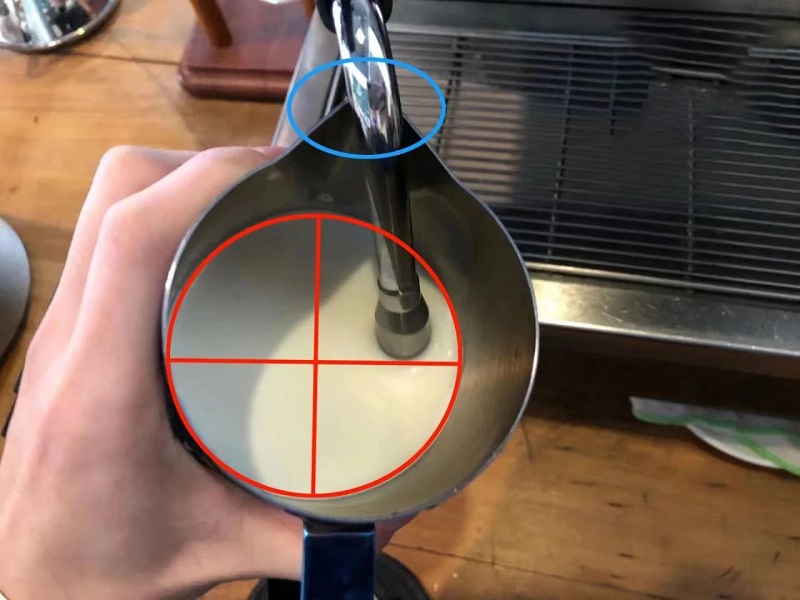When making hot milk coffee, it is inevitable to steam and beat the milk. At first, just steaming the milk was enough, but later it was discovered that by adding high-temperature steam, not only could the milk be heated, but a layer of milk foam could also be formed. Produce coffee with milk bubbles, resulting in a richer and fuller taste. Going forward, baristas discovered that milk bubbles could “draw” patterns on the surface of coffee, known as “pulling flowers”, which laid the foundation for almost all hot milk coffee to have milk bubbles later on.
However, if the whipped milk bubbles are rough, have many large bubbles, and are very thick and dry, basically separated from the milk, the taste of the milk coffee made will become very bad.
Only by producing high-quality milk foam can the taste of milk coffee be improved. High quality milk foam is manifested as a delicate texture with a reflective mirror on the surface. When shaking milk (soaking), it is in a creamy and viscous state, with strong fluidity.
It is still difficult for beginners to create such delicate and smooth milk bubbles, so today, Qianjie will share some techniques for whipping milk bubbles.
Understand the principle of dismissal
For the first time, we need to explain the working principle of using a steam rod to beat milk bubbles. The principle of steam rod heating milk is to spray high-temperature steam into the milk through the steam rod, heating the milk. The principle of whipping milk is to use steam to inject air into the milk, and the protein in the milk will wrap around the air, forming milk bubbles.
Therefore, in a semi buried state, the steam hole can use steam to inject air into the milk, forming milk bubbles. In a semi buried state, it also has the function of dispersing and heating. When the steam hole is completely buried in the milk, air cannot be injected into the milk, which means there is only heating effect.
In the actual operation of whipping milk, at the beginning, let the steam hole be partially buried to create milk bubbles. When whipping the milk bubbles, a “sizzle sizzle” sound will be produced, which is the sound that occurs when air is injected into the milk. After mixing enough milk foam, it is necessary to fully cover the steam holes to avoid further foaming and causing the milk foam to be too thick.
Find the right angle to pass the time
When whipping milk, it is best to find a good angle and let the milk rotate in this direction, which will save effort and improve controllability. The specific operation is to first clamp the steam rod with the cylinder nozzle to form an angle. The milk tank can be slightly tilted towards the body to increase the surface area of the liquid surface, which can better form vortices.
The position of the steam hole is generally placed at 3 or 9 o’clock with the liquid level as the center. After mixing enough milk foam, we need to bury the steam hole and not let it continue to foam. But the whipped milk bubbles are usually rough and there are also many large bubbles. So the next step is to grind all these coarse bubbles into delicate small bubbles.
Therefore, it is best not to bury the steam hole too deep, so that the steam sprayed out cannot reach the bubble layer. The best position is to just cover the steam hole and not make a sizzling sound. The steam sprayed out at the same time can disperse the coarse bubbles in the milk bubble layer, forming delicate and smooth milk bubbles.
When will it end?
Can we finish if we find that the milk foam has been softened? No, the judgment of the end is related to the temperature. Usually, it can be finished by beating the milk to a temperature of 55-65 ℃. Beginners can first use a thermometer and feel it with their hands to grasp the milk temperature, while experienced hands can directly touch the flower vat to know the approximate range of milk temperature. If the temperature has not yet reached after beating, it is necessary to continue steaming until the temperature is reached.
If the temperature has reached and it has not yet been softened, please stop because high milk temperature can cause protein denaturation. Some beginners need to spend a relatively long time in the milking stage, so it is recommended to use refrigerated milk to gain more milking time.
Post time: Apr-30-2024







